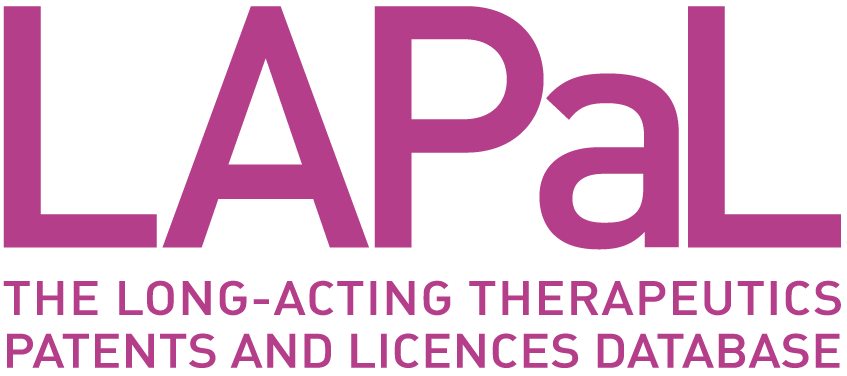
|
Developed by 

|
Supported by 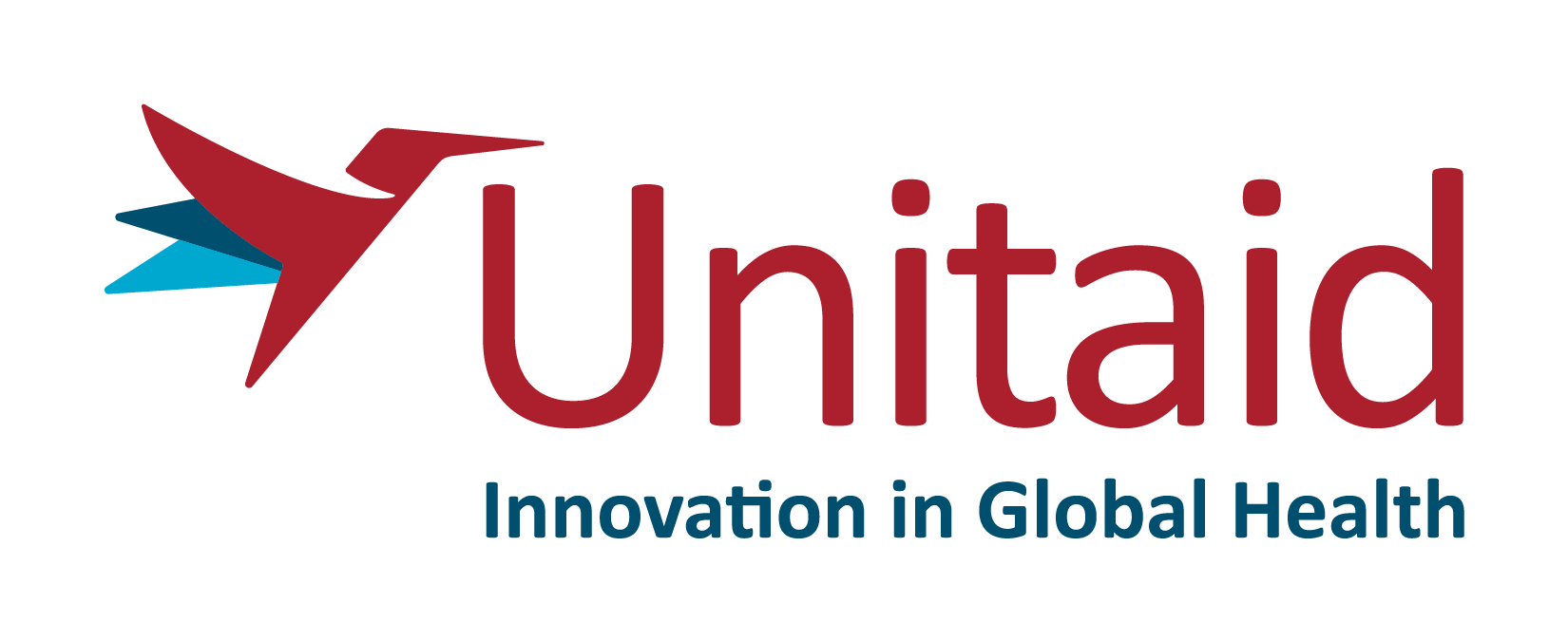

|

Dapivirine Monthly Vaginal Ring
Based on public informationDeveloper(s)
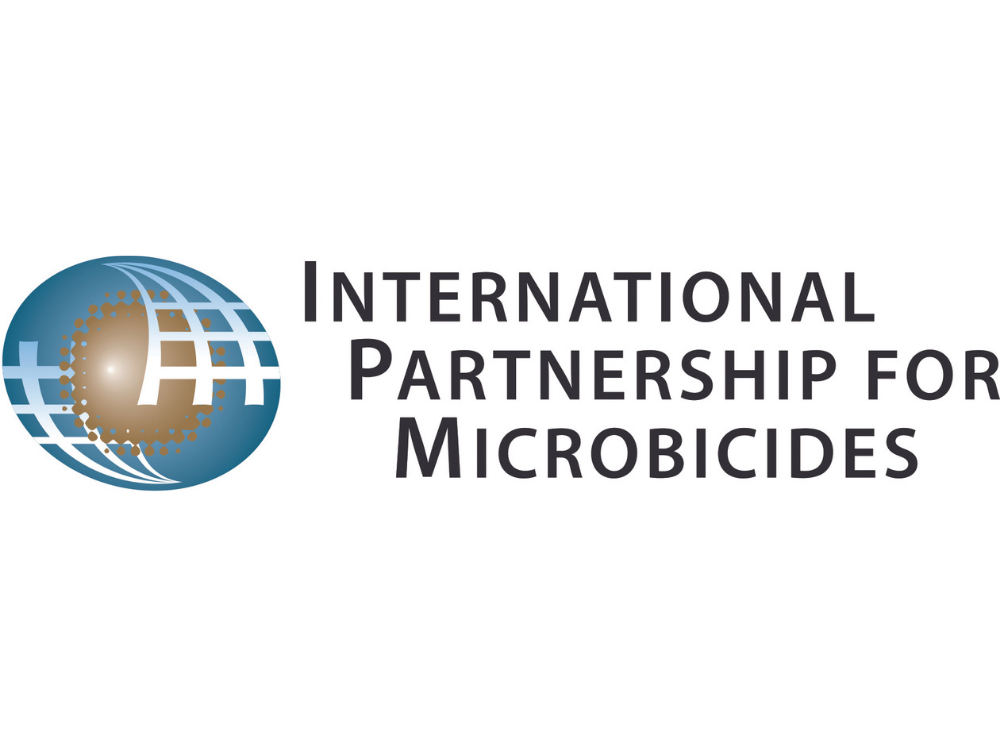
|
International Partnership for Microbicides Originator
https://www.ipmglobal.org/
United States IPM's mission is to develop HIV prevention products and other sexual and reproductive health technologies for women, and to make them available and accessible where they are urgently needed. |

|
Population Council Originator
https://popcouncil.org/
Global The Population Council is a leading research organization dedicated to building an equitable and sustainable world that enhances the health and well-being of current and future generations. We generate ideas, produce evidence, and design solutions to improve the lives of underserved populations around the world. |
|
|
Janssen Pharmaceuticals |
Sponsor(s)
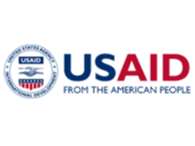
|
USAID https://www.usaid.gov/ |
Partnerships

|
Ajinomoto OmniChem (Aji Bio-Pharma Services) https://ajibio-pharma.com/ |

|
Nusil Technologies https://www.avantorsciences.com/pages/en/nusil |

|
QPharma https://www.qpharma.com/ |
Technology information
Type of technology
Intra-vaginal ring
Administration route
Topical (Vaginal)
Development state and regulatory approval
Dapivirine (DPV)
Marketed
Positive scientific opinion from the European Medicines Agency for use among women ages 18 and older in developing countries. in WHO guidelines
Description
Silicone matrix vaginal ring delivering dapivirine over one month.
Technology highlight
The ring is made of a flexible silicone polymer and contains the ARV dapivirine, an NNRTI, which is dispersed in the silicone matrix and slowly released over the course of a month. The ring delivers dapivirine directly at the site of potential HIV infection, with low systemic absorption. Women insert the flexible, long-acting ring themselves into the vagina and replace it every month.
Technology main components
Dapivirine 25 mg and silicone
Information on the raw materials sourcing, availability and anticipated price
9 to 13 USD/ring
Delivery device(s)
Silicone vaginal ring
APIs compatibility profile
API desired features
Small molecules
Dapivirine
Additional solubility data
Not provided
Additional stability data
Not provided
API loading: Maximum drug quantity to be loaded
< 10 wt%
API co-administration
1 single API : Still being investigated
LogP
Not provided
Dapivirine LogP = 5.6
Scale-up and manufacturing prospects
Scale-up prospects
current scale: ~9000 rings future scale (2022 and beyond): ~45000 rings
Tentative equipment list for manufacturing
injection molding machine mixer automated inspection machine automated packaging machine
Manufacturing
GMP ISO class 8 area
Specific analytical instrument required for characterization of formulation
HPLC tensile tester dissolution apparatus analytical balance
Clinical trials
ASPIRE (MTN-020)
Identifier
NCT01617096
Link
https://clinicaltrials.gov/study/NCT01617096
Phase
Phase III
Status
Completed
Sponsor
International Partnership for Microbicides, Inc.
More details
Phase 3 Safety and Effectiveness Trial of Dapivirine Vaginal Ring for Prevention of HIV-1 in Women This is a double-blind, randomised, placebo-controlled study to assess the safety and efficacy of a silicone elastomer vaginal matrix ring.
Purpose
Phase 3 Safety and Effectiveness Trial of Dapivirine Vaginal Ring for Prevention of HIV-1 in Women
Interventions
Intervention 1
Intervention 2
Countries
Sites / Institutions
Not provided
Trials dates
Anticipated Start Date
Not provided
Actual Start Date
2012-07-24
Anticipated Date of Last Follow-up
2022-12-19
Estimated Primary Completion Date
2012-06-12
Estimated Completion Date
2012-06-12
Actual Primary Completion Date
2022-12-21
Actual Completion Date
2015-12-01
Studied populations
Age Cohort
- Adults
Genders
- Female
Accepts pregnant individuals
No
Accepts lactating individuals
No
Accepts healthy individuals
Yes
Comments about the studied populations
Inclusion Criteria: * Age 18 through 45 years (inclusive) at screening, verified per site SOPs; within this range, sites may restrict the upper age limit per site SOPs, to target women at high risk of HIV infection * Able and willing to provide written informed consent to be screened for and to take part in the study * Able and willing to provide adequate locator information, as defined in site SOPs * HIV-uninfected based on testing performed by study staff at screening and enrollment (per applicable algorithm in Appendix II) * Per participant report, sexually active, defined as having vaginal intercourse at least once in the 3 months prior to screening * Using an effective method of contraception at enrollment, and intending to use an effective method for the duration of study participat
Health status
Study type
Interventional (clinical trial)
Enrollment
2629
Allocation
Randomized
Intervention model
Parallel Assignment
Intervention model description
Not provided
Masking
Double-blind masking
Masking description
Not provided
Frequency of administration
Studied LA-formulation(s)
Studied route(s) of administration
Use case
PrEP
Key resources
| Type | Title | Content | Link |
|---|---|---|---|
| Link | Experiences with simultaneous use of contraception and the vaginal ring for HIV prevention in sub-Saharan Africa | https://pubmed.ncbi.nlm.nih.gov/33892693/ | |
| Link | Patterns of Adherence to a Dapivirine Vaginal Ring for HIV-1 Prevention Among South African Women in a Phase III Randomized Controlled Trial | https://pubmed.ncbi.nlm.nih.gov/35344520/ | |
| Link | Acceptability of the Dapivirine Vaginal Ring for HIV-1 Prevention and Association with Adherence in a Phase III Trial | https://pubmed.ncbi.nlm.nih.gov/33713213/ | |
| Link | Clinical and Virologic Outcomes Following Initiation of Antiretroviral Therapy Among Seroconverters in the Microbicide Trials Network-020 Phase III Trial of the Dapivirine Vaginal Ring | https://pubmed.ncbi.nlm.nih.gov/30346511/ | |
| Link | Vaginal Ring Use in a Phase 3 Microbicide Trial: A Comparison of Objective Measures and Self-reports of Non-adherence in ASPIRE | https://pubmed.ncbi.nlm.nih.gov/30218318/ |
A Safety Study of Dapivirine Vaginal Ring in Africa
Identifier
NCT01071174
Link
https://clinicaltrials.gov/study/NCT01071174
Phase
Phase I/II
Status
Completed
Sponsor
International Partnership for Microbicides, Inc.
More details
This is a double-blind, randomized, placebo-controlled Phase I/II study to assess the safety of a silicone elastomer vaginal ring containing 25mg dapivirine.
Purpose
A Safety Study of Dapivirine Vaginal Ring in Africa
Interventions
Intervention 1
Intervention 2
Countries
Sites / Institutions
Not provided
Trials dates
Anticipated Start Date
Not provided
Actual Start Date
2010-04-01
Anticipated Date of Last Follow-up
2011-08-01
Estimated Primary Completion Date
2010-02-19
Estimated Completion Date
2010-02-19
Actual Primary Completion Date
2011-08-02
Actual Completion Date
2011-07-01
Studied populations
Age Cohort
- Adults
Genders
- Female
Accepts pregnant individuals
No
Accepts lactating individuals
No
Accepts healthy individuals
Yes
Comments about the studied populations
Inclusion Criteria: * Women between 18 and 40 years of age inclusive who can provide informed consent * Available for all visits and consent to follow all procedures scheduled for the study * Healthy and self-reported sexually active * HIV-negative * On a stable form of contraception and willing to continue OR have undergone surgical sterilization at least 3 months prior to enrollment * In the absence of the use of exogenous hormone(s), have a self-reported regular menstrual cycle defined as having a minimum of 21 days and a maximum of 35 days between menses * Upon pelvic/speculum examination and colposcopy at the time of enrolment, the cervix and vagina appear normal as determined by the investigator * Asymptomatic for genital infections at the time of enrolment * Willing to refrain from
Health status
Not provided
Study type
Interventional (clinical trial)
Enrollment
280
Allocation
Randomized
Intervention model
Parallel Assignment
Intervention model description
Not provided
Masking
Triple-blind masking
Masking description
Not provided
Frequency of administration
Studied LA-formulation(s)
Studied route(s) of administration
Use case
PrEP
Key resources
Pharmacokinetic Study of the Dapivirine Vaginal Ring in Lactating Women
Identifier
NCT02808949
Link
https://clinicaltrials.gov/study/NCT02808949
Phase
Phase I
Status
Completed
Sponsor
International Partnership for Microbicides, Inc.
More details
Phase 1 PK Study of the Dapivirine Vaginal Ring in Lactating Women.
Purpose
Pharmacokinetic Study of the Dapivirine Vaginal Ring in Lactating Women
Interventions
Intervention 1
Countries
Sites / Institutions
Not provided
Trials dates
Anticipated Start Date
Not provided
Actual Start Date
2015-02-01
Anticipated Date of Last Follow-up
2018-03-12
Estimated Primary Completion Date
2016-06-22
Estimated Completion Date
2016-06-22
Actual Primary Completion Date
2018-03-13
Actual Completion Date
2018-03-03
Studied populations
Age Cohort
- Adults
Genders
- Female
Accepts pregnant individuals
Yes
Accepts lactating individuals
No
Accepts healthy individuals
Yes
Comments about the studied populations
Inclusion Criteria: Women must meet all of the following criteria (by self-report, unless otherwise indicated) to be eligible for inclusion in the study: 1. Age 18 or older at screening as verified per site SOP 2. Per participant report, at least 6 weeks postpartum at Enrollment 3. Willing and able to provide written informed consent to be screened for and take part in the study 4. Willing and able to provide adequate locator information, as defined in site SOP 5. Willing and able to communicate in spoken and written English 6. HIV-1/2 uninfected at Screening and Enrollment, per applicable algorithm in Appendix II and willing to receive HIV test results Note: HIV-1/2 screening may be omitted at Enrollment if the time between Screening and Enrollment is \< 30 days 7. Prior to Enrollment,
Health status
Study type
Interventional (clinical trial)
Enrollment
16
Allocation
Non-randomized
Intervention model
Single group assignment
Intervention model description
Not provided
Masking
Open label
Masking description
Not provided
Frequency of administration
Studied LA-formulation(s)
Studied route(s) of administration
Use case
PrEP
Key resources
B-PROTECTED (MTN-043)
Identifier
NCT04140266
Link
https://clinicaltrials.gov/study/NCT04140266
Phase
Phase III
Status
Completed
Sponsor
National Institute of Allergy and Infectious Diseases (NIAID)
More details
The purpose of this study is to evaluate the safety and drug detection of the dapivirine monthly vaginal ring and oral Truvada in breastfeeding mother-infant pairs.
Purpose
Safety and Drug Detection Study of Dapivirine Vaginal Ring and Oral TRUVADA® in Breastfeeding Mother-Infant Pairs
Interventions
Intervention 1
Intervention 2
Countries
Sites / Institutions
Not provided
Trials dates
Anticipated Start Date
Not provided
Actual Start Date
2020-09-24
Anticipated Date of Last Follow-up
2023-07-14
Estimated Primary Completion Date
2019-10-25
Estimated Completion Date
2019-10-25
Actual Primary Completion Date
2023-08-04
Actual Completion Date
2021-11-04
Studied populations
Age Cohort
- Adults
- Older Adults
Genders
- Female
- Cisgender female
Accepts pregnant individuals
No
Accepts lactating individuals
Yes
Accepts healthy individuals
Yes
Comments about the studied populations
Inclusion Criteria: Inclusion Criteria - Mother Participant mothers must meet all the following criteria to be eligible for inclusion in the study: * Age 18 years or older at Screening, as verified per site Standard Operating Procedures (SOPs). * At Enrollment, between 6 to 12 weeks postpartum (verified by birth records and/or similar supportive documentation and defined as between 42 - 84 days after delivery, inclusive). * By participant report at Screening and Enrollment, currently exclusively breastfeeding one infant and willing and able to continue exclusively breastfeeding that infant for the duration of their participation in the study. * Note: Exclusive breastfeeding will be defined as infant nutrition solely from breast milk, as determined by 7-day recall breastfeeding histor
Health status
Study type
Interventional (clinical trial)
Enrollment
394
Allocation
Randomized
Intervention model
Parallel Assignment
Intervention model description
Not provided
Masking
Open label
Masking description
Not provided
Frequency of administration
Studied LA-formulation(s)
Studied route(s) of administration
Use case
PrEP
Key resources
DELIVER (MTN-042)
Identifier
NCT03965923
Link
https://clinicaltrials.gov/study/NCT03965923
Phase
Phase III
Status
Active, not recruiting
Sponsor
National Institute of Allergy and Infectious Diseases (NIAID)
More details
The purpose of this study is to evaluate the maternal and infant safety of the dapivirine (DPV) monthly vaginal ring (VR) and daily oral Truvada in HIV-uninfected pregnant women and their infants.
Purpose
Randomized, Open Label Safety Trial of Dapivirine Vaginal Ring and Oral TRUVADA® Use in Pregnancy
Interventions
Intervention 1
Intervention 2
Countries
Sites / Institutions
Not provided
Trials dates
Anticipated Start Date
Not provided
Actual Start Date
2020-01-09
Anticipated Date of Last Follow-up
2023-02-01
Estimated Primary Completion Date
2019-05-29
Estimated Completion Date
2019-05-29
Actual Primary Completion Date
2023-02-02
Actual Completion Date
2024-06-30
Studied populations
Age Cohort
- Adults
Genders
- Female
- Cisgender female
Accepts pregnant individuals
Yes
Accepts lactating individuals
No
Accepts healthy individuals
Yes
Comments about the studied populations
Inclusion Criteria: * Age 18 through 40 years (inclusive) at Enrollment, verified per site standard operating procedures (SOPs). * At Enrollment, evidence of a viable, intrauterine, singleton pregnancy with sonographic confirmation, including for gestational age assessment. * Note: If adequate (per judgment of Investigator of Record \[IoR\]/designee) sonographic results are not available from medical records at Screening, an ultrasound must be performed and results be available for review at Enrollment for all Cohorts. The ultrasound should be performed no later than the 36th week of gestation for Cohort 1 or the 28th week of gestation for Cohort 2. * At Enrollment, pregnancy within gestational age limits of the currently enrolling cohort (per the study protocol). * HIV-uninfected base
Health status
Study type
Interventional (clinical trial)
Enrollment
859
Allocation
Randomized
Intervention model
Sequential assignment
Intervention model description
Not provided
Masking
Open label
Masking description
Not provided
Frequency of administration
Studied LA-formulation(s)
Studied route(s) of administration
Use case
PrEP
Key resources
HOPE (MTN-025)
Identifier
NCT02858037
Link
https://clinicaltrials.gov/study/NCT02858037
Phase
Phase III
Status
Completed
Sponsor
International Partnership for Microbicides, Inc.
More details
HIV Open-label Prevention Extension (HOPE) to Assess the Continued Safety of and Adherence to a Monthly Vaginal Ring Containing Dapivirine in Women
Purpose
Trial to Assess the Continued Safety of and Adherence to a Vaginal Ring Containing Dapivirine in Women
Interventions
Intervention 1
Countries
Sites / Institutions
Not provided
Trials dates
Anticipated Start Date
Not provided
Actual Start Date
2016-07-18
Anticipated Date of Last Follow-up
2022-10-24
Estimated Primary Completion Date
2016-08-08
Estimated Completion Date
2016-08-08
Actual Primary Completion Date
2022-10-25
Actual Completion Date
2018-10-10
Studied populations
Age Cohort
- Adults
Genders
- Female
- Cisgender female
Accepts pregnant individuals
No
Accepts lactating individuals
No
Accepts healthy individuals
Yes
Comments about the studied populations
Inclusion Criteria: Women must meet all of the following criteria to be eligible for inclusion in the study 1. Previously enrolled in MTN-020 (ASPIRE) 2. Able and willing to provide written informed consent to be screened for and to take part in the study 3. Able and willing to provide adequate locator information, as defined in site SOPs 4. HIV-uninfected based on testing performed by study staff at Screening and Enrollment 5. Using an effective method of contraception at Enrollment, and intending to use an effective method for the duration of study participation; effective methods include hormonal methods (except contraceptive ring); intrauterine contraceptive device (IUCD); and sterilization (of participant, as defined in site SOPs) 6. At Screening and Enrollment, agrees not to partic
Health status
Study type
Interventional (clinical trial)
Enrollment
1456
Allocation
Non-randomized
Intervention model
Single group assignment
Intervention model description
Participants will receive a silicone elastomer vaginal matrix ring containing 25 mg of dapivirine to be replaced each month for a total period of 12 months of use.
Masking
Open label
Masking description
Not provided
Frequency of administration
Studied LA-formulation(s)
Studied route(s) of administration
Use case
PrEP
Key resources
Ring Study (IPM 027)
Identifier
NCT01539226
Link
https://clinicaltrials.gov/study/NCT01539226
Phase
Phase III
Status
Completed
Sponsor
International Partnership for Microbicides, Inc.
More details
The Ring study was a Phase 3, double-blind, randomised, placebo-controlled study to assess the safety and efficacy of a silicone elastomer monthly vaginal matrix ring.
Purpose
Safety and Efficacy Trial of a Dapivirine Vaginal Matrix Ring in Healthy HIV-Negative Women
Interventions
Intervention 1
Intervention 2
Countries
Sites / Institutions
Not provided
Trials dates
Anticipated Start Date
Not provided
Actual Start Date
2012-03-27
Anticipated Date of Last Follow-up
2022-09-26
Estimated Primary Completion Date
2012-02-27
Estimated Completion Date
2012-02-27
Actual Primary Completion Date
2022-10-19
Actual Completion Date
2016-12-13
Studied populations
Age Cohort
- Adults
Genders
- Female
Accepts pregnant individuals
No
Accepts lactating individuals
No
Accepts healthy individuals
Yes
Comments about the studied populations
Inclusion Criteria: * Women \> 18 and \< 45 years of age, at screening, who can provide informed consent; * Available for all visits and consent to follow all procedures scheduled for the trial; * Self-reported sexually active (defined as an average of at least one penetrative penile-vaginal coital act per month for the last 3 months prior to screening); * HIV-negative as determined by the HIV algorithm applied at screening and enrolment; * On a stable form of contraception as defined within section 5.4 and willing to continue on stable contraception for the duration of the clinical trial, unless post-menopausal or surgically sterilised; * Asymptomatic for genital infections at the time of enrolment (if a woman is diagnosed with any clinically significant curable STI, she must have initia
Health status
Study type
Interventional (clinical trial)
Enrollment
1959
Allocation
Randomized
Intervention model
Parallel Assignment
Intervention model description
Not provided
Masking
Double-blind masking
Masking description
Not provided
Frequency of administration
Studied LA-formulation(s)
Studied route(s) of administration
Use case
PrEP
Key resources
DREAM (IPM 032)
Identifier
NCT02862171
Link
https://clinicaltrials.gov/study/NCT02862171
Phase
Phase III
Status
Completed
Sponsor
International Partnership for Microbicides, Inc.
More details
A follow-on, open label trial to assess continued safety of and adherence to the Dapivirine(25mg) vaginal ring-004 in healthy, HIV-negative women
Purpose
To Assess Continued Safety of and Adherence to the Dapivirine (25 mg) Vaginal Ring-004 in Healthy, HIV-negative Women
Interventions
Intervention 1
Countries
Sites / Institutions
Not provided
Trials dates
Anticipated Start Date
Not provided
Actual Start Date
2016-07-12
Anticipated Date of Last Follow-up
2022-10-24
Estimated Primary Completion Date
2016-08-10
Estimated Completion Date
2016-08-10
Actual Primary Completion Date
2022-10-25
Actual Completion Date
2019-01-11
Studied populations
Age Cohort
- Adults
Genders
- Female
- Cisgender female
Accepts pregnant individuals
No
Accepts lactating individuals
No
Accepts healthy individuals
Yes
Comments about the studied populations
Inclusion Criteria: Women must meet all the following criteria to be eligible to enrol in the trial: 1. Previously enrolled in the IPM 027 trial 2. Available for all visits and consent to follow all procedures scheduled for the trial 3. Using an effective method of contraception at the Enrolment Visit, and intending to use an effective contraceptive method for the duration of trial participation, unless post-menopausal with no history of menses for one year prior to screening 4. HIV-negative as determined by the HIV algorithm applied at Screening/Pre- Enrolment 5. Willing to refrain from participation in another research trial using drugs, vaccines, medical devices and microbicides for the duration of the IPM 032 trial 6. Willing to provide adequate locator information for trial retentio
Health status
Study type
Interventional (clinical trial)
Enrollment
941
Allocation
Non-randomized
Intervention model
Single group assignment
Intervention model description
Not provided
Masking
Open label
Masking description
Not provided
Frequency of administration
Studied LA-formulation(s)
Studied route(s) of administration
Use case
PrEP
Key resources
Excipients
Proprietary excipients used
silicone elastomer for extended use
Novel excipients or existing excipients at a concentration above Inactive Ingredients Database (IID) for the specified route of administration
excipient has been included in regulatory dossier for product
Residual solvents used
No residual solvent used
Additional features
Other features of the technology
- Drug-eluting
- Removable
- Molded
- Room temperature storage
- At least 1 year shelf life
Release properties
Releases dapivirine over a one-month period
Injectability
Not Applicable
Safety
There were no safety concerns with long-term use of the ring in Phase III clinical studies. Data from two open-label (Phase IIIB) studies show a similar favorable safety profile as do 12 smaller safety studies.
Stability
ICH Climate Zone IV (A/B)
Storage conditions and cold-chain related features
5 years shelf life This product does not require specific temperature storage conditions. Store in the original package to protect from light.
Potential application(s)
Therapeutic area(s)
Use case(s)
Use of technology
Ease of administration
- Administered by a community health worker
- Administered by a nurse
- Administered by a specialty health worker
- Self-administered
Frequency of administration
Monthly
User acceptance
Phase III and open label extension studies indicate a high user acceptance
Targeted user groups
Age Cohort- Adolescents
- Adults
- Female
Pregnant individuals
Yes
Lactating individuals
Yes
Healthy individuals
Yes
Comment
Women at substantial risk of contracting HIV through receptive vaginal sex
Potential associated API(s)
Dapivirine (DPV)
Class(es)
microbicide
Development stage
Marketed
Clinical trial number(s)
Not provided
Foreseen/approved indication(s)
Prevention of HIV infection through vaginal sex
Foreseen user group
women older than 18 at substantial risk of contracting HIV through vaginal sex
Foreseen duration between application(s)
1 month
Applications to Stringent Regulatory Authorities (SRA) / regulatory approvals
Positive scientific opinion from the European Medicines Agency for use among women ages 18 and older in developing countries. in WHO guidelines
Patent info
Technology patent families
Not patent applicable for this technology
Dapivirine 25 mg (vaginal ring)
Patent informations
| Patent description | Representative patent | Categories | Patent holder | Licence with MPP | Patent source |
|---|---|---|---|---|---|
|
Dapivirine compounds and analogues (Markush structure)
Expiry date: 2019-03-24 The invention is concerned with pyrimidine derivatives having HIV replication inhibiting properties. The invention further relates to methods for their preparation and pharmaceutical compositions comprising them. The invention also relates to the use of said compounds in the manufacture of a medicament useful for the treatment of subjects suffering from HIV (Human Immunodeficiency Virus) infection |
WO9950250 | Compound | JANSSEN PHARMACEUTICA NV | No | MPP Search |
Patent status
| Patent status/countries | Low, Low- middle and upper-middle | High income |
|---|---|---|
| Granted | United States of America | |
| Filed | Hungary | |
| Not in force | North Macedonia, Albania, Botswana, Gambia (the), Ghana, Kenya, Lesotho, Malawi, Sierra Leone, Sudan, Eswatini, Uganda, Zambia, Zimbabwe, Argentina, Brazil, China, Turkmenistan, Belarus, Tajikistan, Kazakhstan, Azerbaijan, Kyrgyzstan, Armenia, Moldova, Republic of, Indonesia, Benin, Cameroon, Burkina Faso, Chad, Guinea-Bissau, Mali, Senegal, Congo, Guinea, Gabon, Niger, Mauritania, Togo, Côte d'Ivoire, Central African Republic, Türkiye, Ukraine, South Africa, Mexico, Viet Nam, Philippines, World Intellectual Property Organization (WIPO), Malaysia | Belgium, Germany, France, Luxembourg, Netherlands, Switzerland, United Kingdom, Sweden, Italy, Austria, Liechtenstein, Greece, Spain, Denmark, Monaco, Portugal, Ireland, Finland, Cyprus, Romania, Latvia, Lithuania, Slovenia, Australia, Bulgaria, Canada, Czechia, Russian Federation, Estonia, Hong Kong, Croatia, Hungary, Israel, Japan, Korea, Republic of, Norway, New Zealand, Poland, Slovakia, Taiwan, Province of China, United States of America, Singapore, World Intellectual Property Organization (WIPO) |
Patent informations
| Patent description | Representative patent | Categories | Patent holder | Licence with MPP | Patent source |
|---|---|---|---|---|---|
|
Dapivirine and analogues topical use for the prevention of HIV infection
Expiry date: 2023-05-13 The invention concerns the microbicidal activity of certain pyrimidine or triazine containing non-nucleoside reverse transcriptase inhibitors. The compounds of the present invention inhibit the systemic infection of a human being with HIV, in particular, the present compounds prevent sexual HIV transmission in humans. |
WO03094920 | Composition, Use | TIBOTEC PHARM LTD | No | MPP Search |
Patent status
| Patent status/countries | Low, Low- middle and upper-middle | High income |
|---|---|---|
| Granted | Belgium, Germany, France, Luxembourg, Netherlands, Switzerland, Sweden, Italy, Liechtenstein, Greece, Denmark, Finland, Estonia, Hungary, Latvia, Israel, Korea, Republic of, Poland, United States of America, Singapore | |
| Filed | Cyprus | |
| Not in force | Türkiye, North Macedonia, Albania, Botswana, Gambia (the), Ghana, Kenya, Lesotho, Malawi, Mozambique, Sierra Leone, Sudan, Eswatini, Tanzania, United Republic of, Uganda, Zambia, Zimbabwe, Argentina, Brazil, China, Turkmenistan, Belarus, Tajikistan, Kazakhstan, Azerbaijan, Kyrgyzstan, Armenia, Moldova, Republic of, Mexico, South Africa, India, Indonesia, Philippines, Thailand, Viet Nam, Benin, Cameroon, Burkina Faso, Chad, Guinea-Bissau, Mali, Senegal, Congo, Guinea, Gabon, Niger, Equatorial Guinea, Mauritania, Togo, Côte d'Ivoire, Central African Republic, World Intellectual Property Organization (WIPO) | Germany, United Kingdom, Austria, Spain, Monaco, Portugal, Ireland, Bulgaria, Czechia, Slovakia, Romania, Lithuania, Slovenia, Australia, Canada, Russian Federation, Hong Kong, Croatia, Japan, Norway, New Zealand, United States of America, World Intellectual Property Organization (WIPO) |
Supporting material
Publications
Evaluating the potential impact and cost-effectiveness of dapivirine vaginal ring pre-exposure prophylaxis for HIV prevention. <br><div><span style="color: inherit; font-family: inherit; font-size: 0.875rem;">Reidy M, Gardiner E, Pretorius C, Glaubius R, Torjesen K, Kripke K.</span><span style="color: inherit; font-family: inherit; font-size: 0.875rem;"> </span></div><div>PLoS One. 2019;14(6):e0218710. </div><div>Published 2019 Jun 26. doi:10.1371/journal.pone.0218710<br></div>
Background
Expanded HIV prevention options are needed to increase uptake of HIV prevention among women, especially in generalized epidemics. As the dapivirine vaginal ring moves forward through regulatory review and open-label extension studies, the potential public health impact and cost-effectiveness of this new prevention method are not fully known. We used mathematical modeling to explore the impact and cost-effectiveness of the ring in different implementation scenarios alongside scale-up of other HIV prevention interventions. Given the knowledge gaps about key factors influencing the ring’s implementation, including potential uptake and delivery costs, we engaged in a stakeholder consultation process to elicit plausible parameter ranges and explored scenarios to identify the possible range of impact, cost, and cost-effectiveness.
Methods and findings
We used the Goals model to simulate scenarios of oral and ring pre-exposure prophylaxis (PrEP) implementation among female sex workers and among other women ≤21 years or >21 years with multiple male partners, in Kenya, South Africa, Uganda, and Zimbabwe. In these scenarios, we varied antiretroviral therapy (ART) coverage, dapivirine ring coverage and ring effectiveness (encompassing efficacy and adherence) by risk group. Following discussions with stakeholders, the maximum level of PrEP coverage (oral and/or ring) considered in each country was equal to modern contraception use minus condom use in the two age groups.
We assessed results for 18 years, from 2018 to 2035. In South Africa, for example, the HIV infections averted by PrEP (ring plus oral PrEP) ranged from 310,000 under the highest-impact scenario (including ART held constant at 2017 levels, high ring coverage, and 85% ring effectiveness) to 55,000 under the lowest-impact scenario (including ART reaching the UNAIDS 90-90-90 targets by 2020, low ring coverage, and 30% ring effectiveness). This represented a range of 6.4% to 2.2% of new HIV infections averted. Given our assumptions, the addition of the ring results in 11% to 132% more impact than oral PrEP alone. The cost per HIV infection averted for the ring ranged from US$13,000 to US$121,000.
Conclusions
This analysis offers a wide range of scenarios given the considerable uncertainty over ring uptake, consistency of use, and effectiveness, as well as HIV testing, prevention, and treatment use over the next two decades. This could help inform donors and implementers as they decide where to allocate resources in order to maximize the impact of the dapivirine ring in light of funding and implementation constraints. Better understanding of the cost and potential uptake of the intervention would improve our ability to estimate its cost-effectiveness and assess where it can have the most impact.
Safety , adherence , and HIV-1 seroconversion among women using the dapivirine vaginal ring ( DREAM ): an open-label , extension study. <br><div><span style="color: inherit; font-family: inherit; font-size: 0.875rem;">Nel A, Niekerk N Van, Baelen B Van, et al.</span><span style="color: inherit; font-family: inherit; font-size: 0.875rem;"> </span></div><a href="https://www.thelancet.com/journals/lanhiv/article/PIIS2352-3018(20)30300-3/fulltext"></a><div>Lancet HIV. 2021;8:77-86. doi:10.1016/S2352-3018(20)30300-3</div>
Useful links
Access principles
|
|
Collaborate for developmentConsider on a case by case basis, collaborating on developing long acting products with potential significant public health impact, especially for low- and middle-income countries (LMICs), utilising the referred to long-acting technology Not provided |
|
|
Share technical information for match-making assessmentProvide necessary technical information to a potential partner, under confidentiality agreement, to enable preliminary assessment of whether specific medicines of public health importance in LMICs might be compatible with the referred to long-acting technology to achieve a public health benefit Not provided |
|
|
Work with MPP to expand access in LMICsIn the event that a product using the referred to long-acting technology is successfully developed, the technology IP holder(s) will work with the Medicines Patent Pool towards putting in place the most appropriate strategy for timely and affordable access in low and middle-income countries, including through licensing Not provided |
Comment & Information
Illustrations

Dapivirine Vaginal Ring (DapiRing) - (1)
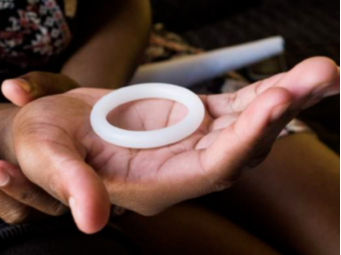
Dapivirine Vaginal Ring (DapiRing) - (2)